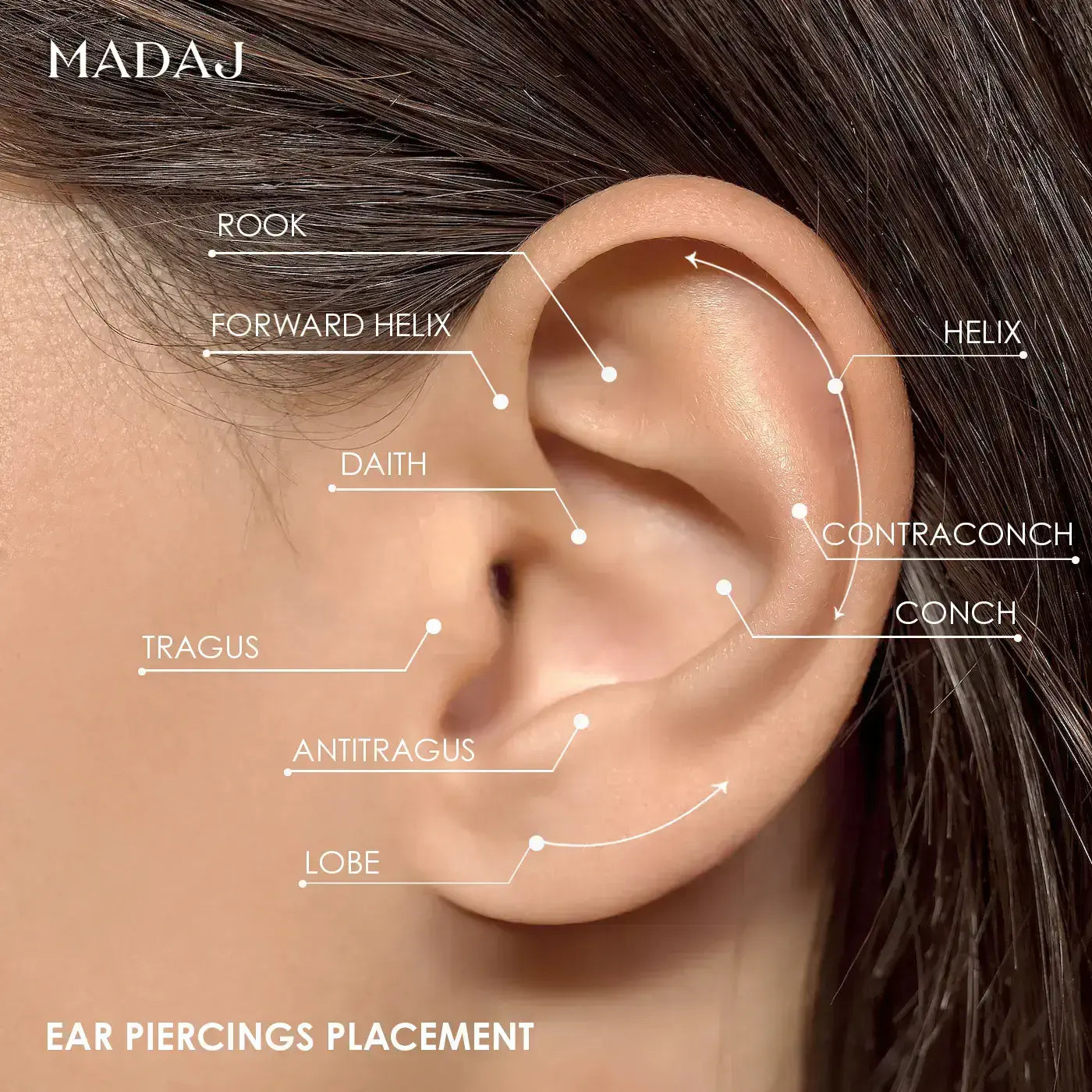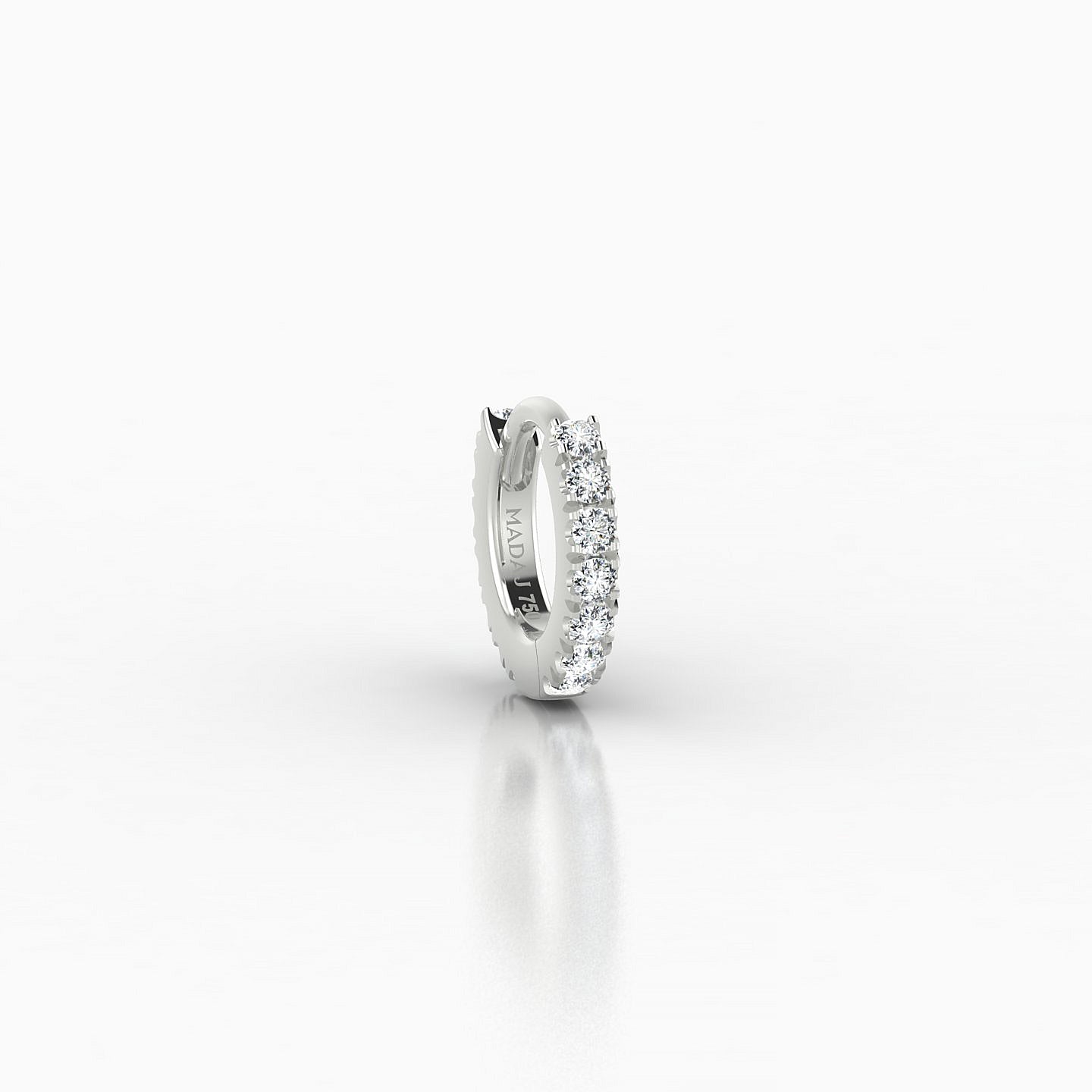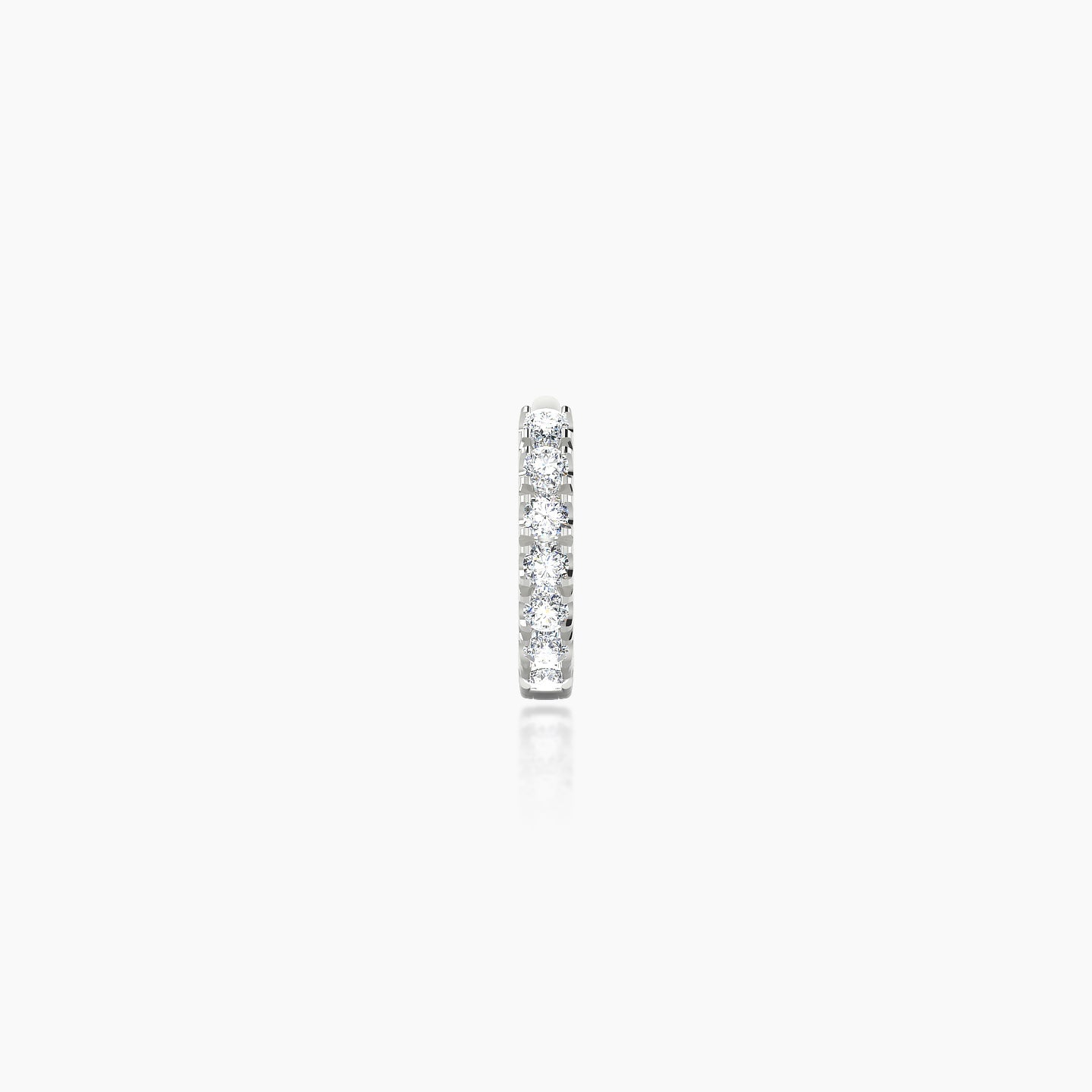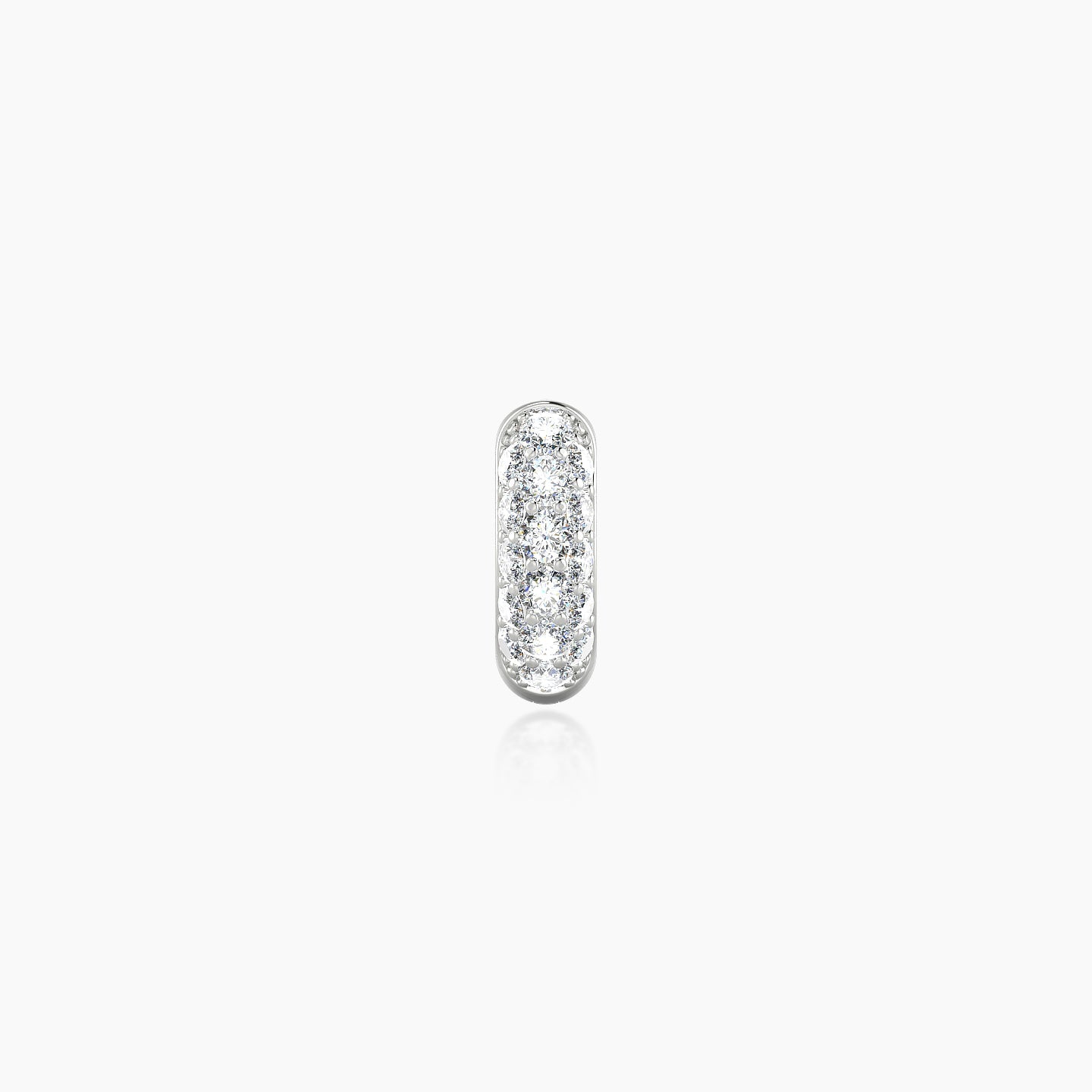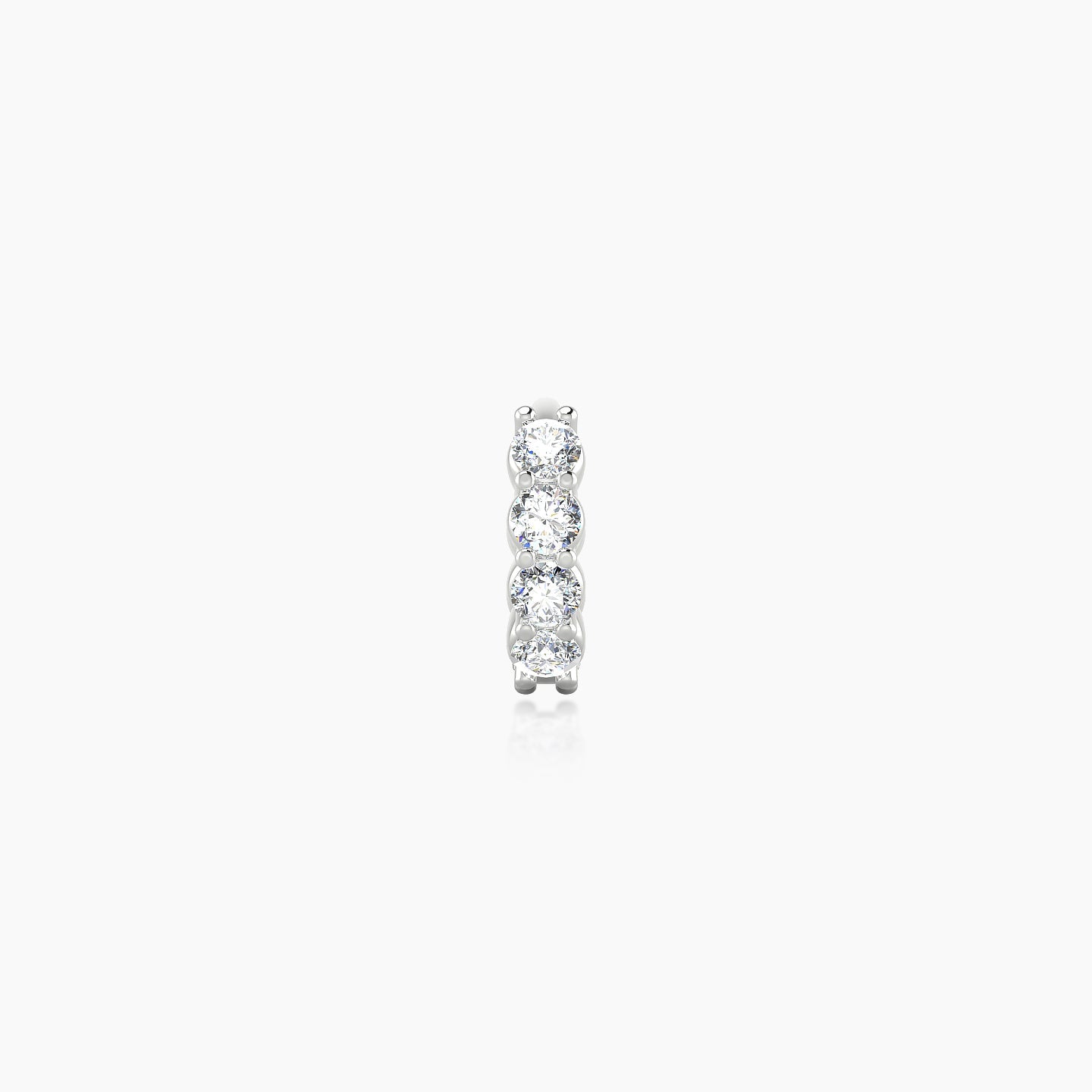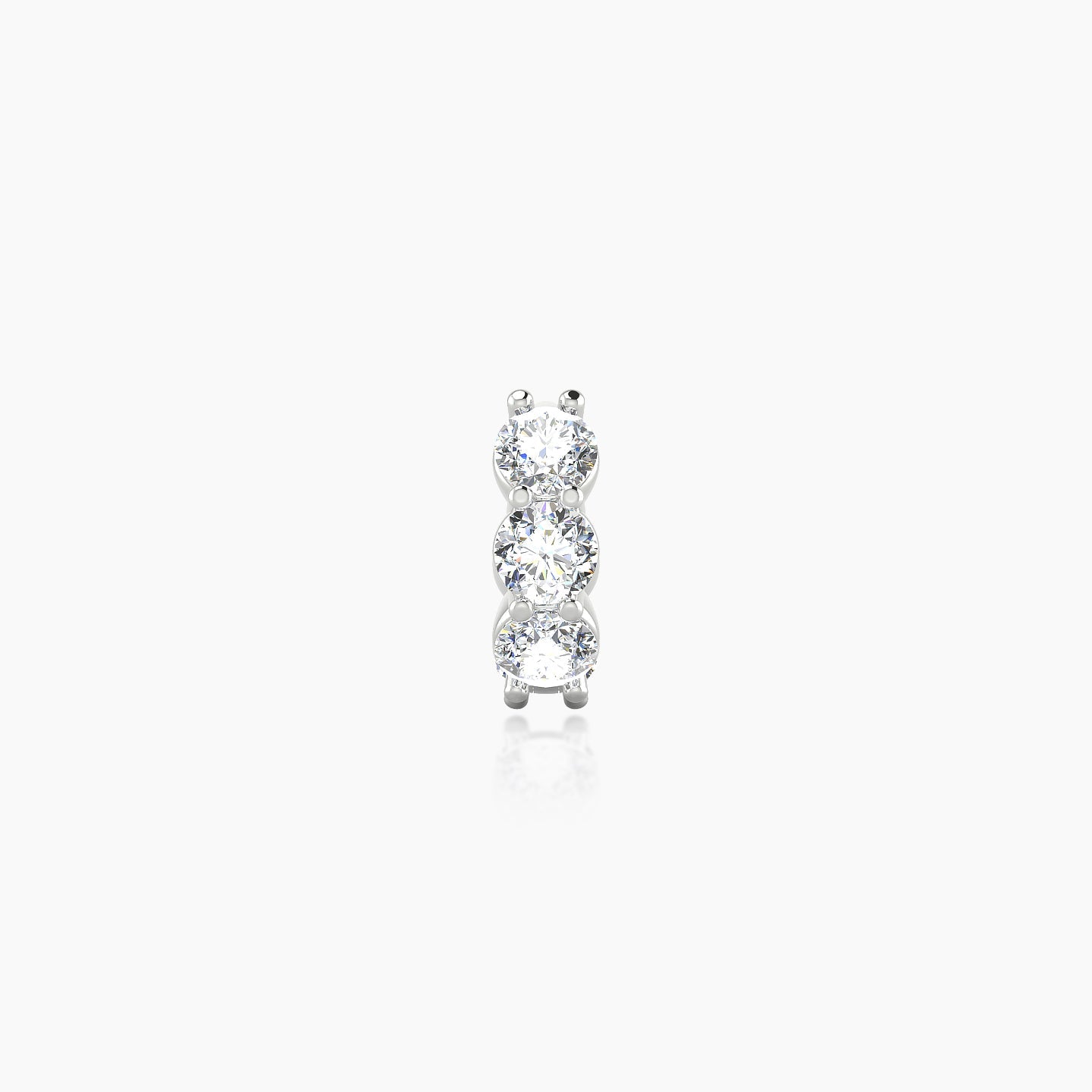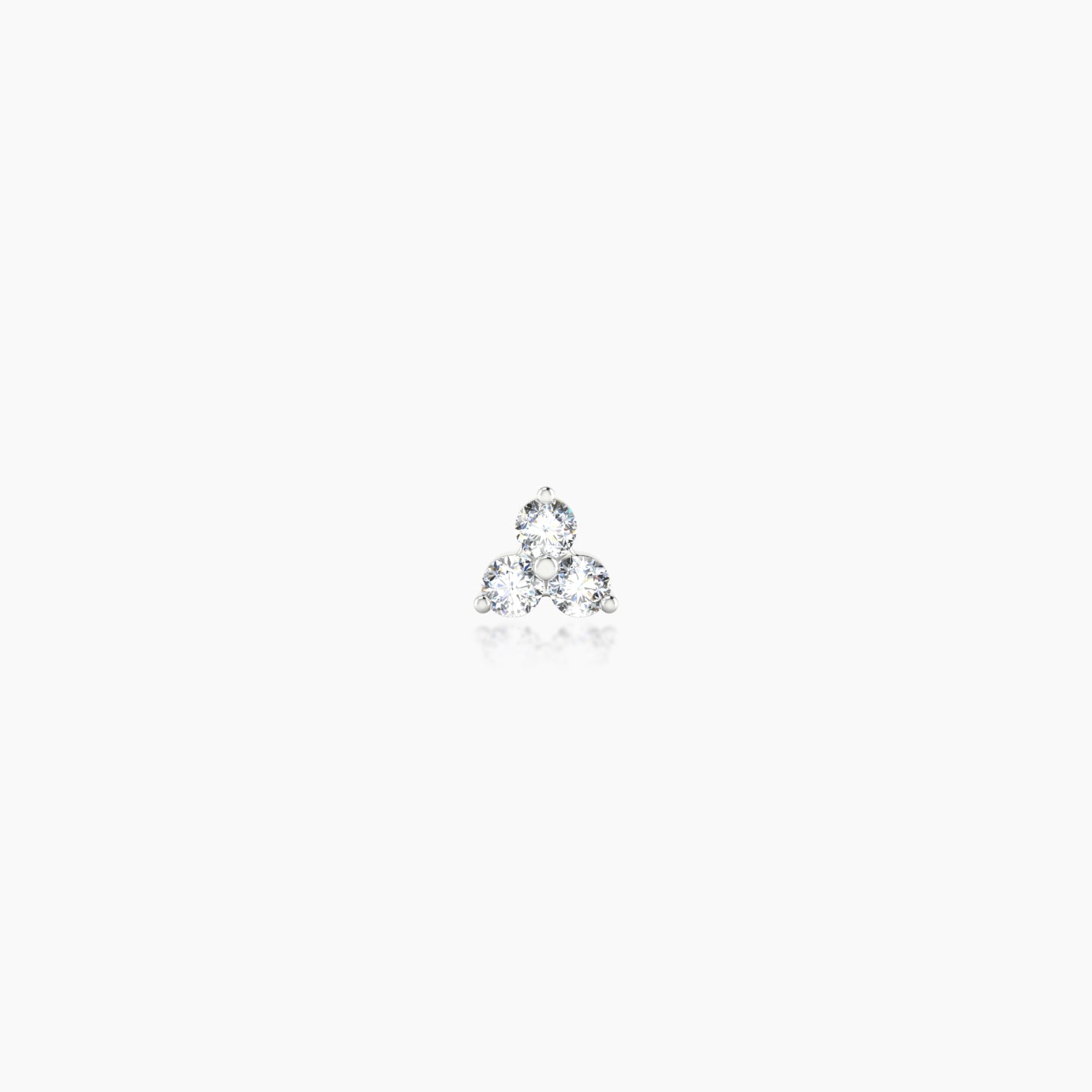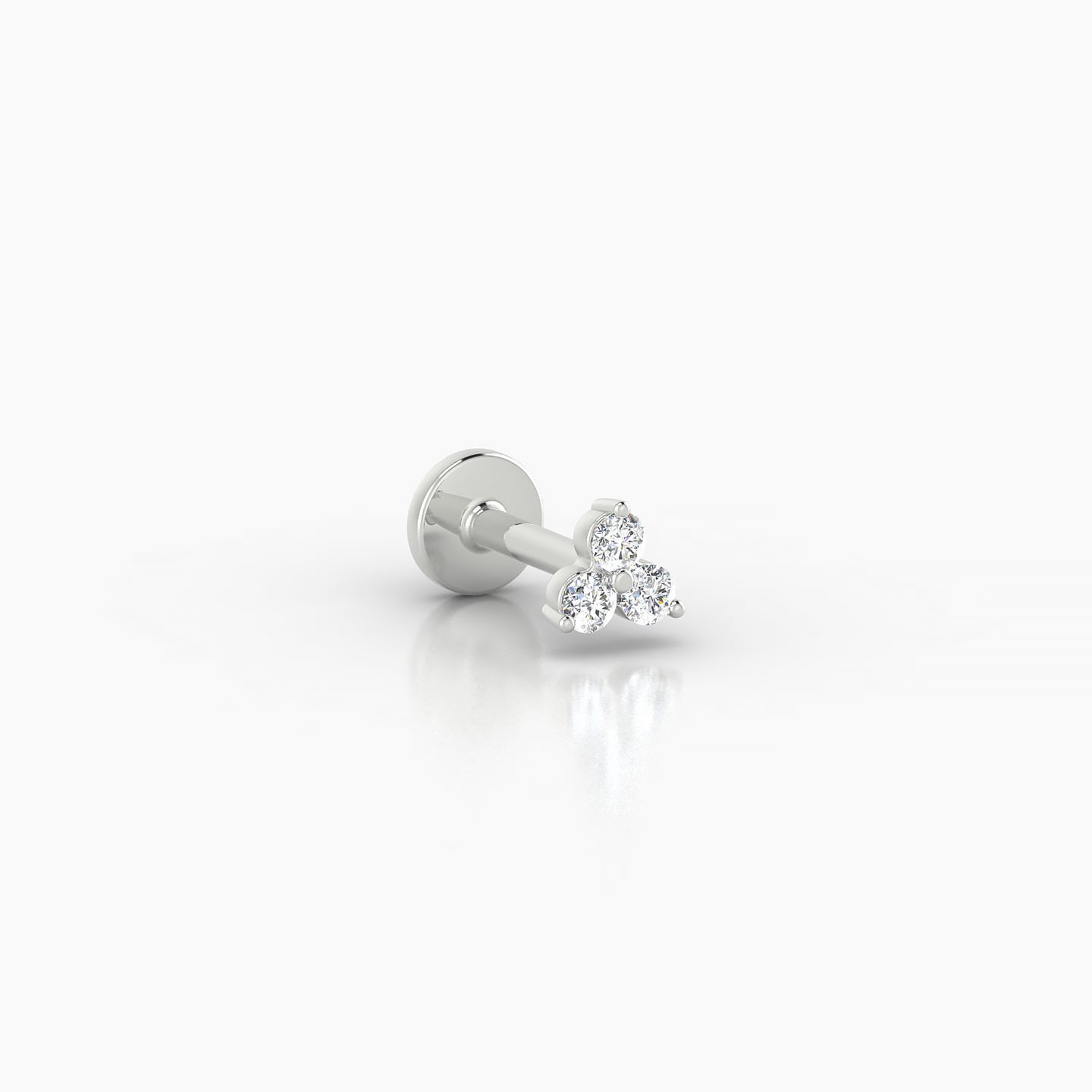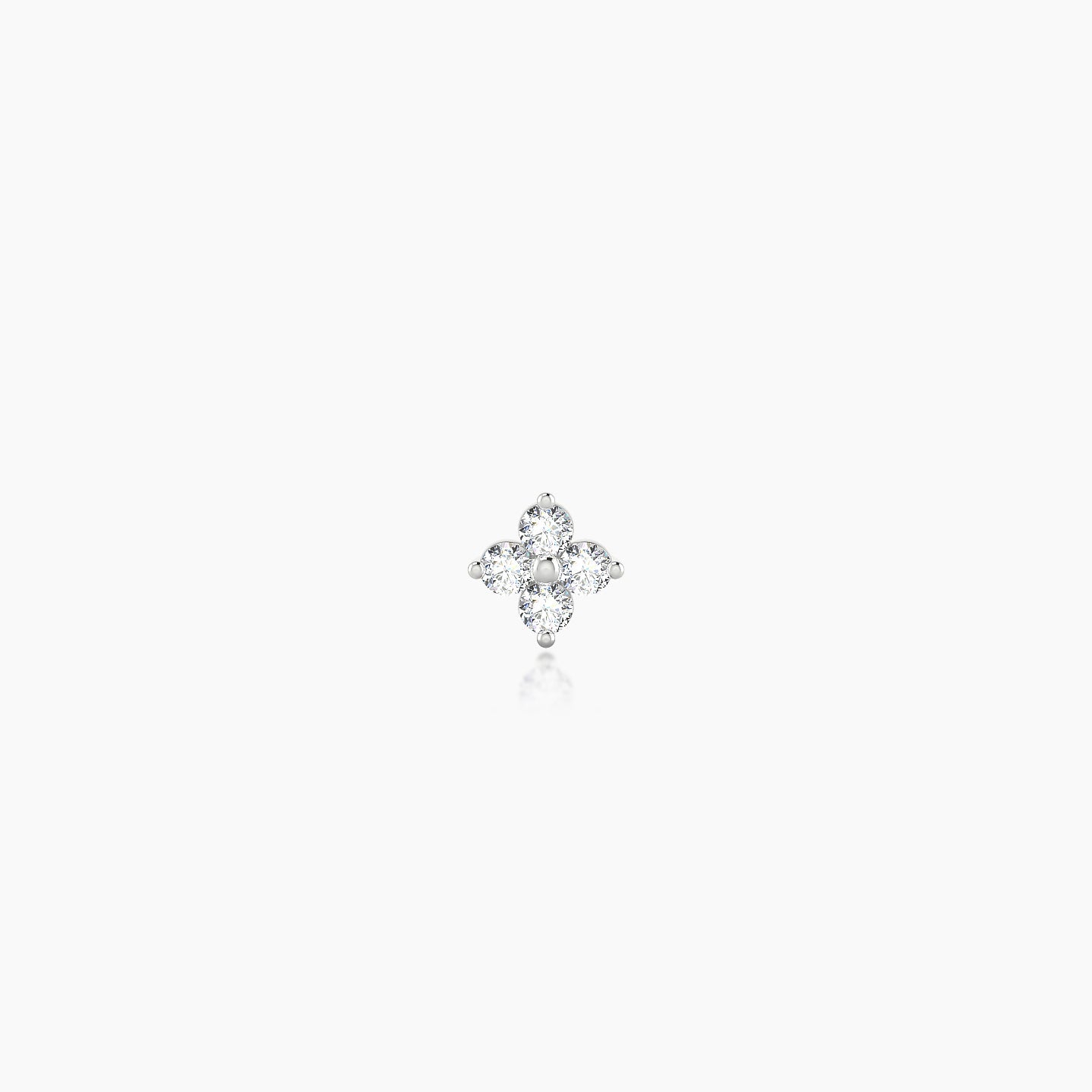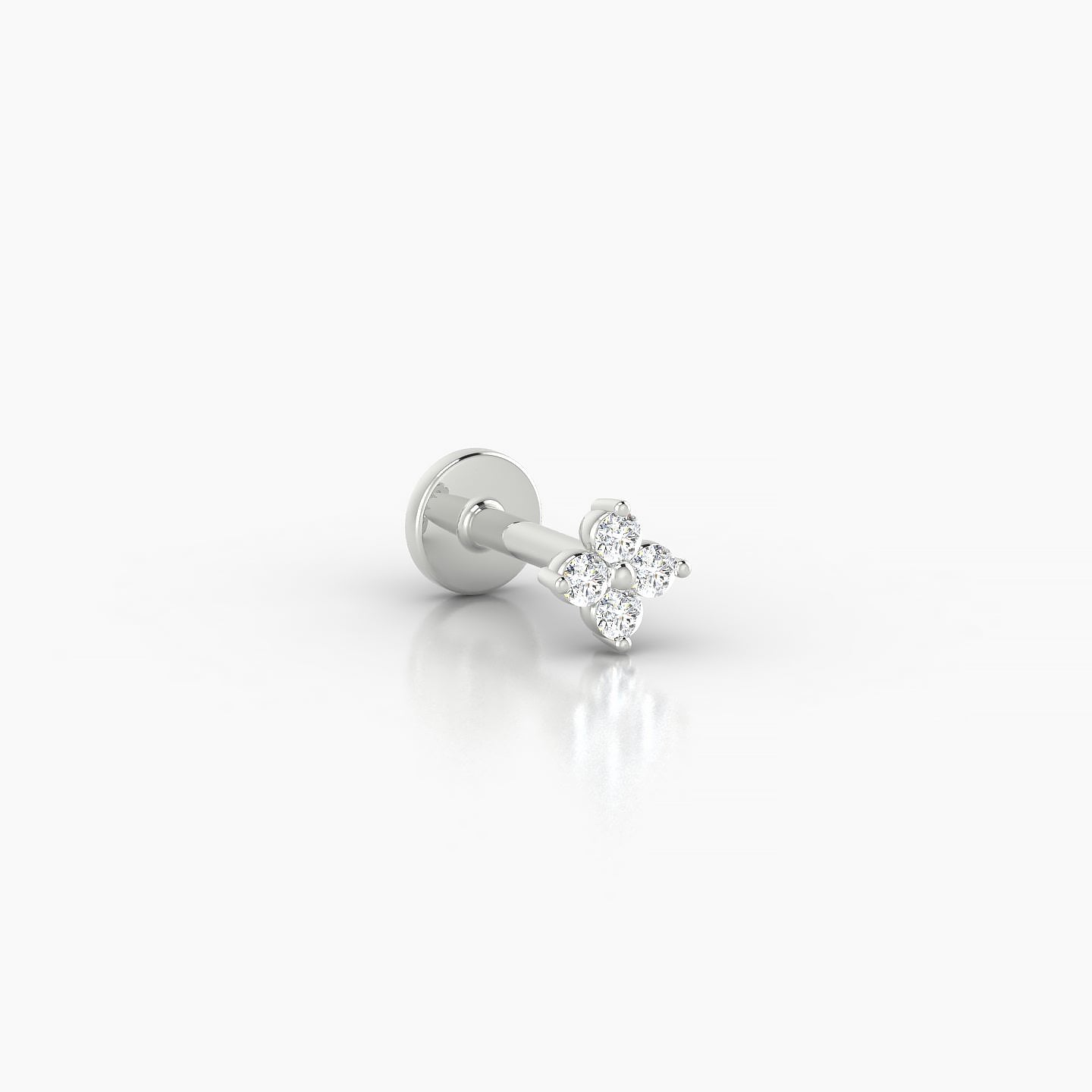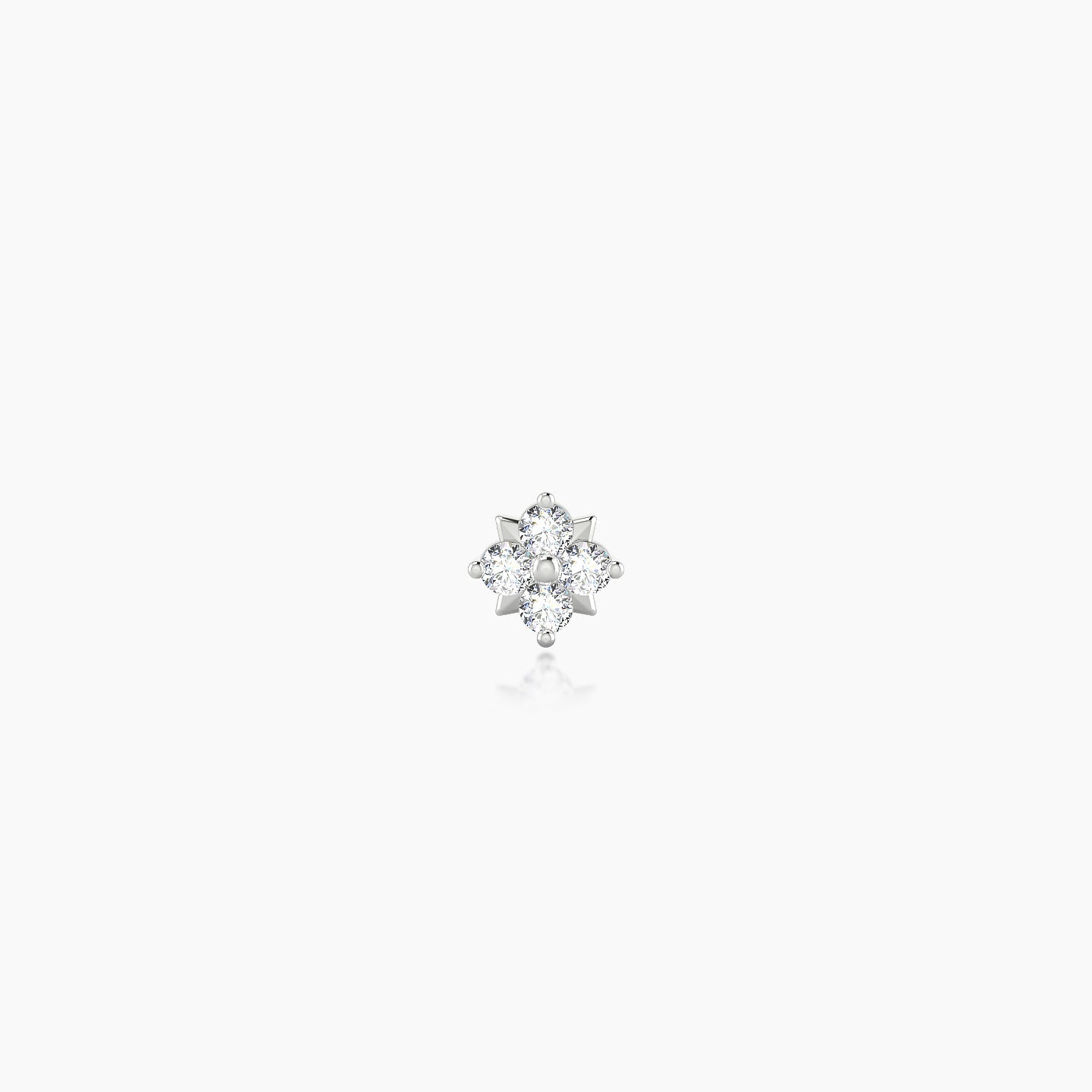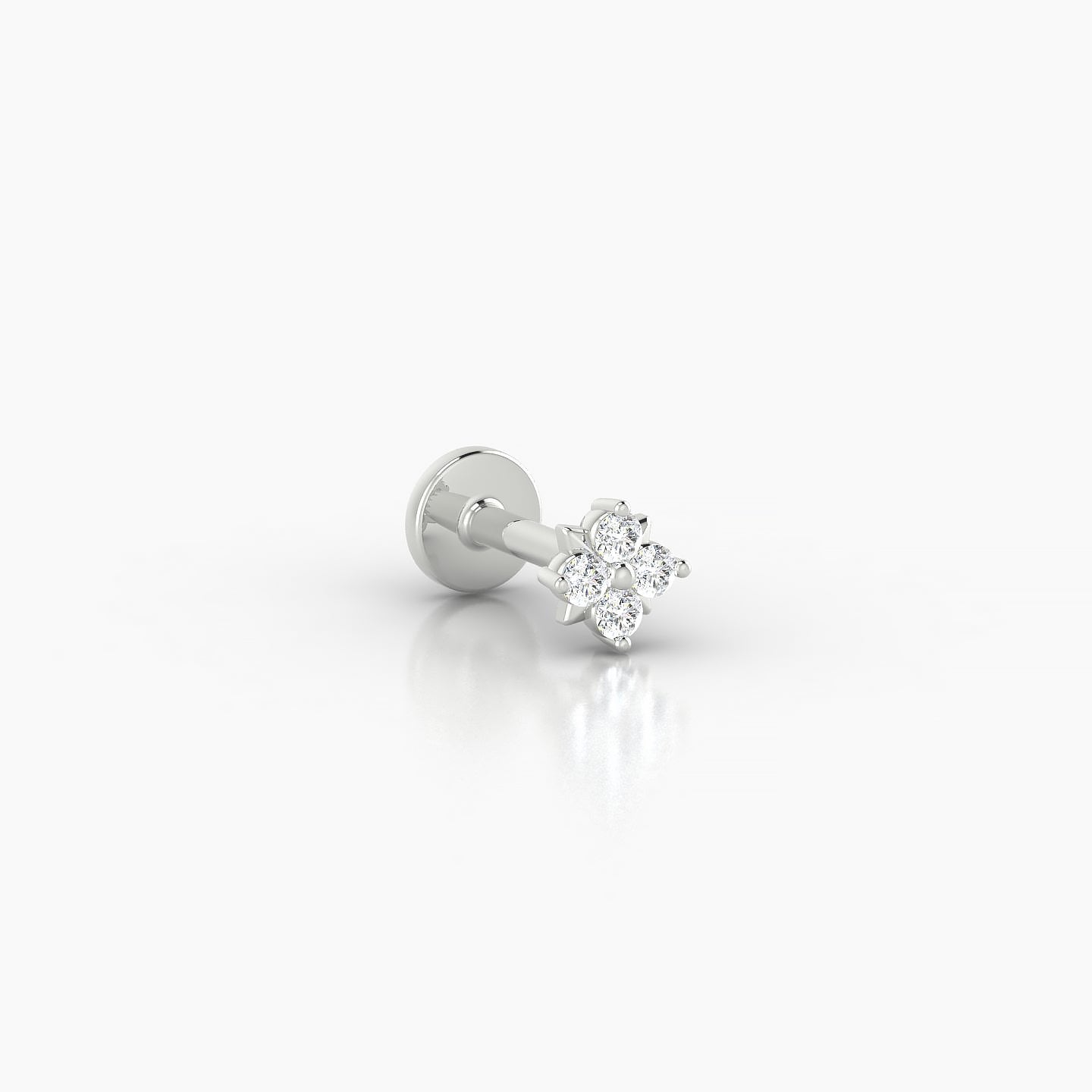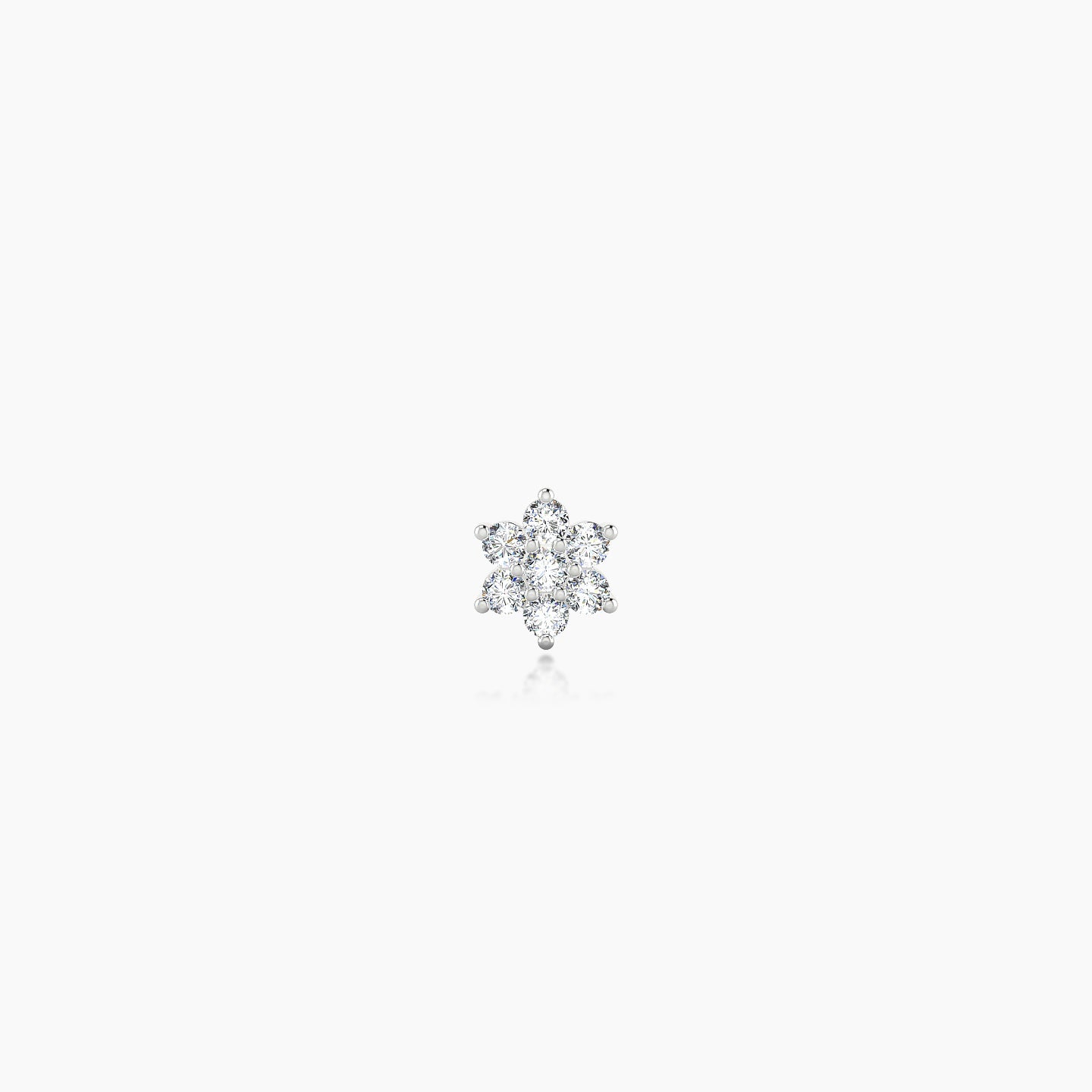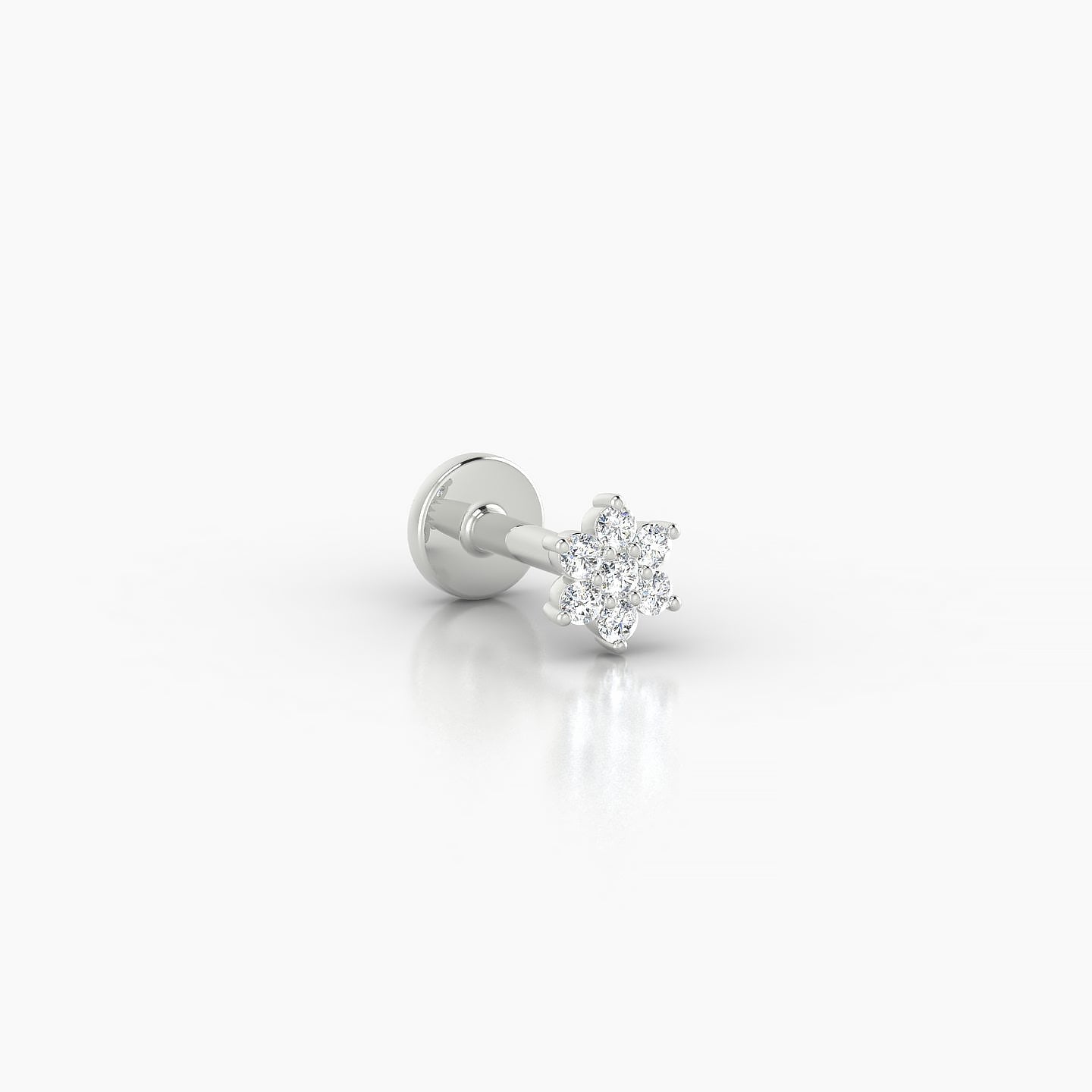Education
EAR PIERCINGS HEALING TIME
In this comprehensive guide on ear piercing healing times, written by our professional piercers, you’ll find all the essential information to properly prepare and care for your piercing.
Learn how long your piercing will take to heal, the different stages of the process, and how to adjust your expectations and care based on the pierced area.
Before fully enjoying the beauty of your future diamond piercing, it’s important to understand the specifics of each area for optimal care.

6 Key Factors in Piercing Healing Time
The healing of an ear piercing depends on several factors:
- The location of the piercing: The tissue structure and blood circulation vary depending on the pierced area.
- Post-piercing care: Regular care is essential to avoid infections and promote rapid healing.
- The quality of the piercing procedure: A skilled piercer and sterilized equipment ensure a complication-free healing process.
- Jewelry materials: 18k gold, for example, reduces the risk of allergies and rejection.
- Lifestyle hygiene: A healthy diet, good hydration, and avoiding smoking or alcohol promote optimal healing.
- Environmental factors: Heat, humidity, and exposure to bacteria can slow down the healing process.

ANTITRAGUS PIERCING HEALING TIME
The healing time for an antitragus piercing typically ranges from 9 to 12 months.
The antitragus piercing healing process : At frist, you'll likely experience around the hole of your antitragus piercing, some redness, swelling, and tenderness. A small amount of clear or slightly yellowish discharge is also normal.
The symptoms should gradually decrease. It's important to continue with your aftercare routine with patience.

CONCH PIERCING HEALING TIME
The healing time for a conch piercing can vary from individual to individual. Generally, it takes about 6 to 12 months for a conch piercing to heal completely.
The conch piercing healing process : Expect some redness, swelling, and tenderness during the first few weeks. A small amount of discharge is normal.
You'll notice a gradual decrease in swelling and discomfort. It's crucial to maintain your cleaning routine even if the piercing seems to be healing well.
The absence of pain, reduced swelling, and no discharge indicates that your piercing is healing properly.

CONTRACONCH PIERCING HEALING TIME
Generally, a contraconch piercing can take anywhere from 6 to 12 months to heal completely. This timeframe can vary based on individual healing rates, the care routine followed, and other factors like overall health and lifestyle habits.
The contraconch piercing healing process : During the first few weeks, it's common to experience some redness, swelling, and tenderness around the piercing area. There might also be some bleeding or a clear, yellowish discharge, which is normal.
After the initial few weeks, the swelling and redness should reduce. However, it's important to continue with the cleaning routine and avoid changing the jewelry prematurely.

DAITH PIERCING HEALING TIME
The healing time for a daith piercing can vary significantly from person to person. Generally, it takes anywhere from 9 months to a year, or sometimes longer, for complete healing.
The healing process of daith piercing : The first few weeks after getting the piercing are critical. During this time, you might experience swelling, redness, tenderness, and some discharge of lymphatic fluid (a clear or slightly yellowish fluid). - It's normal to feel some discomfort, especially when touching or moving the area accidentally.
As weeks progress, the initial symptoms should gradually diminish.

FORWARD HELIX PIERCING HEALING TIME
The healing process : In the first few weeks, it’s normal to experience swelling, redness, and some tenderness around the Forward Helix piercing site.
Up to 3 Months, gradually, the swelling and redness should start to decrease. - Despite improvements, continue with the cleaning routine and avoid changing the jewelry prematurely as the piercing is still healing internally.
The healing time for a Forward Helix piercing can vary depending on individual factors, but typically, it ranges from 6 to 12 months. Some individuals may experience a longer healing period, especially if proper care isn't followed or if there are complications.

HELIX PIERCING HEALING TIME
The healing process : Right after the piercing of the Helix, it's normal to experience pain, redness, and swelling.
Regular cleaning with a saline solution is crucial to prevent infection and promote healing.
A clear or slightly yellowish discharge may form around the jewelry. This is lymph fluid and is normal during the healing process.
Over time, the swelling, redness, and pain should gradually decrease.
The average healing time for a Helix Piercing is typically between 6 to 12 months.

LOBE PIERCING HEALING TIME
The healing process : Right after getting the Lobe piercing, you may experience some pain, redness, and swelling. A small amount of bleeding is also normal in the first few days.
Stick to your cleaning routine, and avoid touching or rotating the jewelry unnecessarily.
Up to 6 weeks : The pain, redness, and swelling should gradually decrease.
Typically, lobe piercings heal relatively quickly compared to other types of ear piercings. The average healing time is around 2 - 4 months. However, this can vary depending on individual health factors, aftercare practices, and lifestyle.

ROOK PIERCING HEALING TIME
Initial Healing Phase (First Few Weeks) : Right after getting the piercing, it's normal to experience swelling, redness, and some pain or discomfort. Regular cleaning with a saline solution is crucial during this stage to prevent infection and promote healing.
Mid-Healing Phase (Up to 6 Months) : Over time, the initial swelling, redness, and pain should gradually decrease. Continue with your cleaning routine, and avoid unnecessary movement or changing of the jewelry, as the rook piercing is still sensitive and healing internally.
The average healing time for a rook piercing is typically between 6 months to 1 year. However, this can vary depending on individual factors such as your body’s healing capabilities, the level of aftercare, and lifestyle habits.

TRAGUS PIERCING HEALING TIME
Initial Healing Period : This is usually the first 6-8 weeks after getting pierced. During this time, it's common to experience some redness, swelling, and tenderness around the piercing site. Proper care during this period is crucial to prevent infection and promote healing.
Intermediate Healing Phase : This phase can last anywhere from 3 to 6 months. The swelling and redness should decrease, but the piercing is still healing internally. It's important to continue with aftercare routines.
A tragus piercing can take anywhere from 6 months to a full year to completely heal. Everyone's body is different, and factors like personal health, aftercare, and the body's response to the piercing can affect the healing time.
FAQ
Healing Time of Ear Piercings
Healing of Ear Piercings
An ear lobe piercing typically takes 2 to 4 months to heal. However, the healing time can vary depending on care and hygiene.
A cartilage piercing (such as tragus, helix, or conch) can take anywhere from 3 to 12 months to fully heal. This depends on the location, care, but also on the thicker, less vascularized structure of the cartilage.
Cartilage is made up of thicker and less vascularized tissues compared to the earlobe, which slows down blood circulation and thus the healing process. Less blood flow in this area makes healing slower and more delicate.
Yes, light swelling and redness are normal in the first few days. If it persists or worsens, it may be a sign of infection.
Ear Piercing Care
Clean the piercing twice a day with a saline solution (avoid alcohol-based products or creams). Always wash your hands before touching the jewelry.
Avoid exposure to chlorine or saltwater during the first 4 to 6 weeks. These can introduce bacteria that may infect the piercing.
It’s advised to wait at least 6 to 12 months for a cartilage piercing before changing jewelry. For a lobe piercing, you can change it after 6 to 8 weeks.
It’s recommended to avoid sleeping on the side of the piercing during the first few weeks to prevent pressure, which could irritate or infect the piercing.
Avoid using creams, essential oils, or topical products. Stick to saline solutions specifically designed for cleaning piercings.
Infection and Complications
Signs of infection include persistent redness, significant swelling, pus, intense pain, or a sensation of heat around the piercing. If these symptoms occur, consult a professional immediately.
A bad odor may signal the start of an infection. Clean the piercing with a saline solution, but if the smell persists, consult a professional to avoid complications.
If a cyst forms around your piercing, avoid popping it yourself. Consult a piercer or a doctor for appropriate treatment.
Yes, cartilage piercings can be more painful than ear lobe piercings because cartilage is denser and less vascularized. However, the pain is brief and varies from person to person.
No, ear piercings should not affect your hearing. However, if you experience persistent pain or discomfort, consult a doctor.
A keloid is an abnormal scar that often forms after a piercing or injury. It’s characterized by excessive tissue growth, forming a bump on the skin that is usually larger than the original area.
To treat a keloid, it is recommended to consult a professional. Options may include steroid creams, cortisone injections, or laser treatments. Do not try to remove the keloid yourself, as this could worsen the situation.
A qualified piercer ensures a sterile procedure, minimizes the risk of infection, and makes sure the piercing is properly placed, which promotes faster and complication-free healing.
It’s possible to redo a piercing after an infection, but ensure the infection is completely treated and the area is fully healed. Seek advice from a professional before getting re-pierced.
Yes, a piercing can start to close up partially if care is not taken or if you don’t clean the area regularly. This is especially true for cartilage piercings.
It’s recommended to have a check-up 1 to 2 weeks after the piercing to ensure it is properly placed and shows no signs of infection.
Contact a madaj advisor
Got questions about your piercing’s healing process?
Feel free to reach out – our MADAJ piercing expert team is here to help!
SHOP

